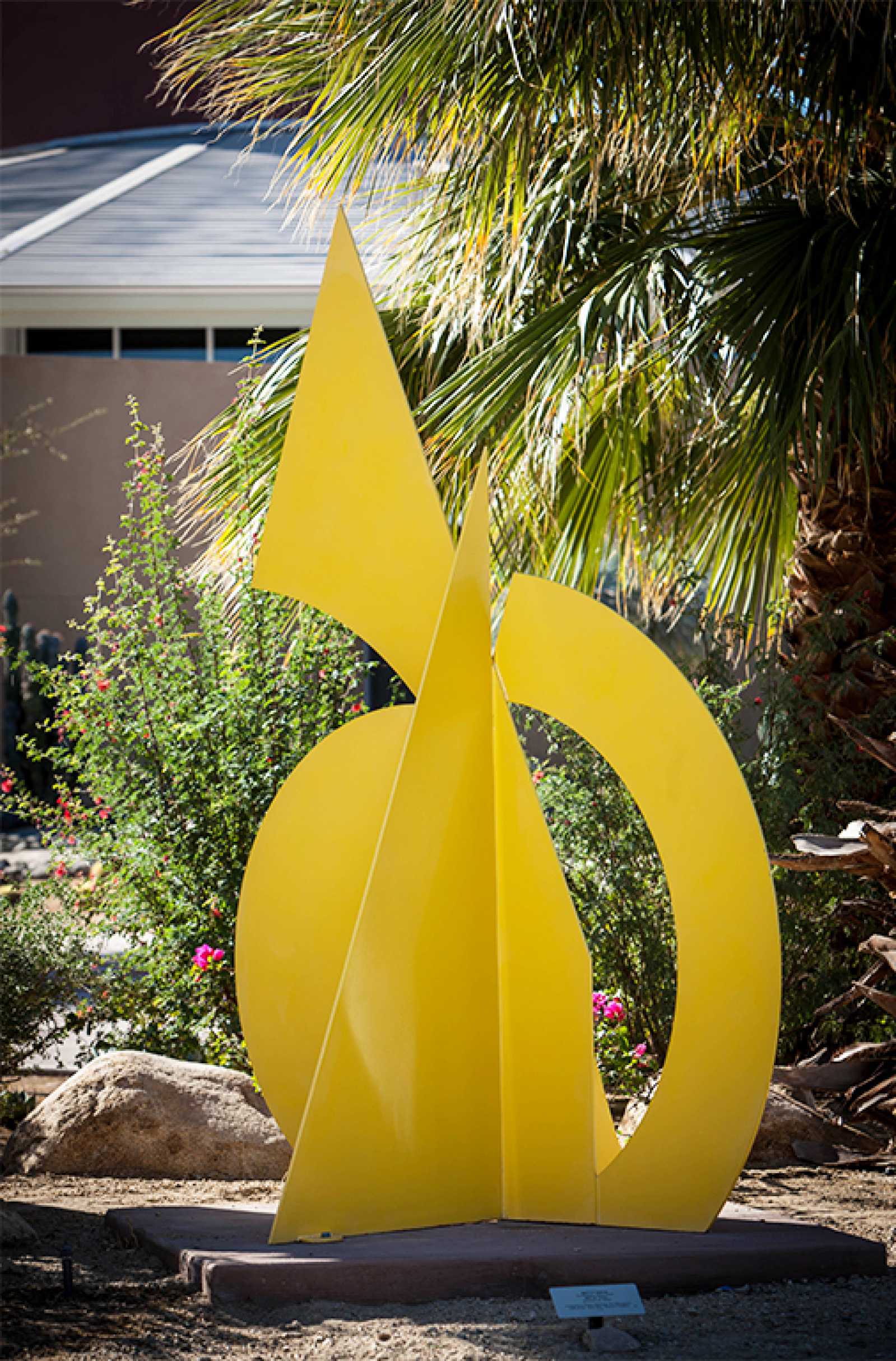Get Inspired by Betty Gold
Betty Gold (American, born 1935), MA IV, 2005, enamel on steel, 96 x 66 x 48 inches, Gift of Mr. and Mrs. David Chatkin, 1-2005.
In this activity, you will create geometric sculptures—a smaller scaled version of type of shapes created by artist Betty Gold. By combing different forms, you will create balance in three-dimensional sculptures.
This project utilizes geometric shapes cut from paper and assembled into new and complex shapes.
What is form and balance?
Form is the shape of a three-dimensional object. Forms can be geometric, such as rectangles and squares, or organic and free-flowing.
Balance refers to the elements of art such as line, shape, and color that are combined in different configurations to create a composition. It also refers to the even distribution of physical weight so a structure will not fall over.
Betty Gold’s over-sized sculptures are scaled to the body, and the artist has remained committed to geometric balance throughout her work. Her piece, MA IV, is currently on view in the Faye Sarkowsky Sculpture Garden.
Supplies:
- Heavyweight paper such as folders or construction paper; old playing cards
- Scissors
Instructions
Step 1
Using your selected paper, cut it into rectangular shapes of various sizes. Think about different geometric shapes that can be created using your rectangles.
Tip: folding the page in sections will help create different sizes…
Step 2
Group your shapes by size and weight. Keep one larger shape to be used as the base of your sculpture and set this aside.
Step 3
Using the larger shape you have identified as the base, create folds so that it can balance and stand on its own. Cut slits in the top edge where some of your shapes can slot in.
Step 4
Working with each of the other shapes, decide which edge will be the bottom and which will be the top. Cut slits on the bottom where it will attach to the base.
Tip: more weight will be distributed with larger cuts.
Step 5
Play around with different variations, and add or subtract shapes as needed.
Consider: are your pieces evenly balanced so your composition will not fall over? How many shapes can you add before it becomes unbalanced? Is the form evenly dispersed so the eye is not more attracted to one area over another?







